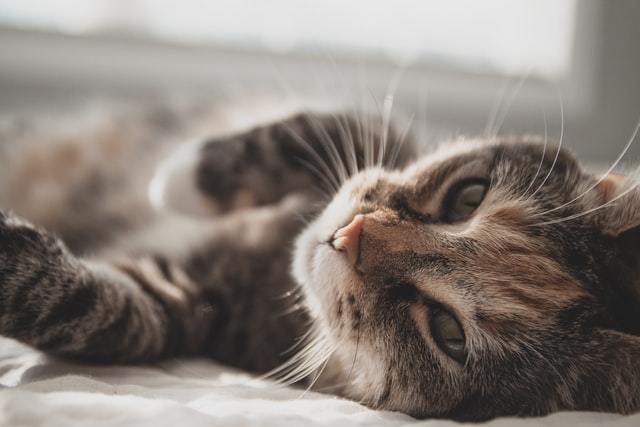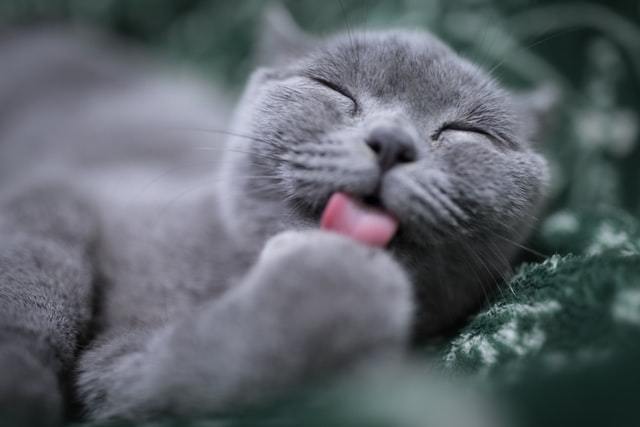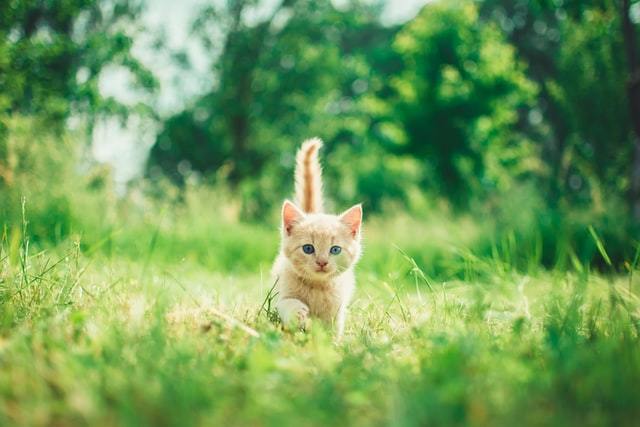It’s easy to imagine our lithe, graceful cat companions are made of rubber. There seems to be no direction they can’t twist and no athletic maneuver they can’t perform while making the whole thing look easy.
The fact is, while cat’s are undoubtedly the ninjas of the animal kingdom, they are also unusually susceptible to joint problems, especially in their old age.
Believe it or not, up to 90% of cats over twelve have some form of degenerative joint disease.
There’s a good chance it’ll become an issue for most cat owners sooner or later.
In this two part guide, I’ll give you a solid basic overview of cats and joint health—why it’s difficult to diagnose, how you can tell if your cat has joint pain and what you can do about it.

THE PROBLEM WITH JOINT CONDITIONS IN CATS
You’d think joint treatments for cats would be pretty easy and straightforward, especially given how common it is! Unfortunately it’s not so simple. There are three big reasons why joint pain is difficult to diagnose and problematic to treat.
It’s Just Part of Aging
The simple fact is, aging sucks. And it sucks as much for cats as it does for your garden variety human. When a cat gets old, it’s joints simply will lose some of their natural elasticity.
Sure this can be slowed down with the right lifestyle changes, but it’s not going to completely stop or go away.
Cats Are Difficult
Adding to this, joint problems are spectacularly difficult to diagnose in cats.
The reason? Unlike most creatures, cats have a natural tendency to hide pain. They’ll deliberately conceal their symptoms from you, your vet and anyone else taking a close look at them.
For this reason, the signs of joint pain only tend to manifest when the condition is quite advanced.
It’s Hard to Treat
Finally, joint issues are just really, really tricky to treat properly. There is pain relief available. NSAIDs can be used, for example, and research suggests they are quite effective.
The problem is, they typically come with a set of difficult side effects and therefore require close and careful management.
Your vet is going to be able to give you targeted advice on the best medications to deal with chronic joint pain.
Be mindful that pain makes any creature miserable, and it’s both humane and ethical to do everything in your power to help your cat friend minimize that discomfort.

HOW DO YOU KNOW IF YOUR CAT HAS JOINT PROBLEMS?
So given that it is hard to detect and frequently only discovered quite late, what signs can you look for to indicate that your cat may have some joint problems?
Here are the top three.
Grumpiness
Yes, most cats have their grumpy days. It’s just part of their personality.
But there’s a big difference between occasionally hissy fits and the persistent grumpiness you’ll observe in a cat who genuinely hurts.
They may hiss. They may even try to bite you, especially if you touch part of their body which is unusually tender. It can be quite traumatic for human and cat alike when these outbursts happen.
Please, please don’t take this personally! Think of it as just your cat finally telling you, “I’m not happy. I hurt. I need your help.” Never punish a cat for being in pain.
If your cat has chronic, ongoing aggressive or grumpy behavior, it’s time to get to the vet.
General Appearance
I firmly maintain that you can glean 90% of a cat’s well-being simply from its appearance.
A happy cat is alert, their fur is well groomed, their personality will flow through every movement.
A hurting or unhappy cat will start to neglect their personal hygiene. Their fur may become matted, dull and oily. Their eyes will lose their luster, and for want of a better word, they’ll just seem withdrawn.
You may also see “focused grooming.” This occurs when a cat is trying to heal its hurt by grooming the same area over and over. If you see this, especially in the limbs, it’s a likely sign they’re suffering from joint pain.
Slower and More Tentative Movement
This might seem an obvious one, but it can actually be harder to pin down than you think, simply because your cat’s range of motion will most likely have diminished only very gradually.
If you notice your cat not playing like they used to, or if they seem reluctant to jump up to their usual sleeping places, this is definitely a red flag that their joints may be slowing them down.

The best advice I can offer in looking for joint pain is to listen to your instincts. Cats are subtle and secretive, but they’re also excellent at telling you what you need to know if you pay close enough attention.
It’s worth repeating this because it’s important. When a cat is hurting it is likely to act out. It’s hard, but try not to take this personally.
Any aggression or grumpiness isn’t really directed at you. It’s directed at the hurt they’re feeling. They’re telling you they’re having a tough time. The best thing you can do for them is listen and get them the medical attention they need.
In Part Two, I’ll explore some of the practical steps you can take to make life easier and more enjoyable for a cat with joint pain.



